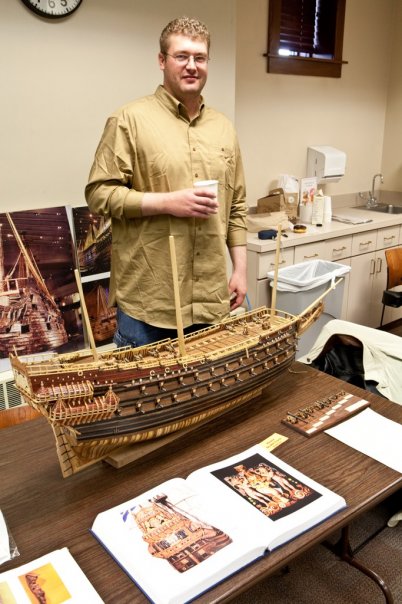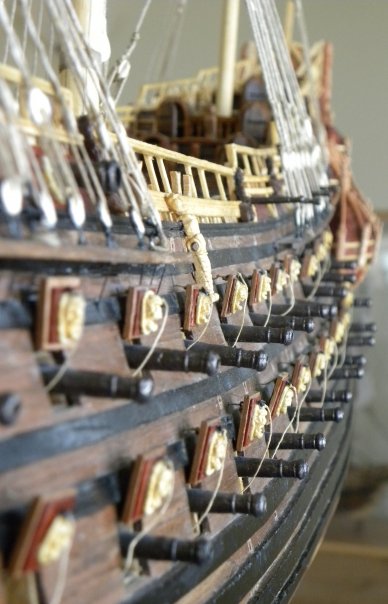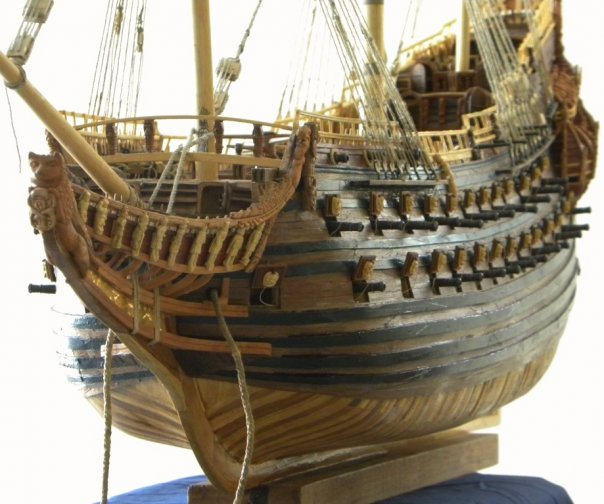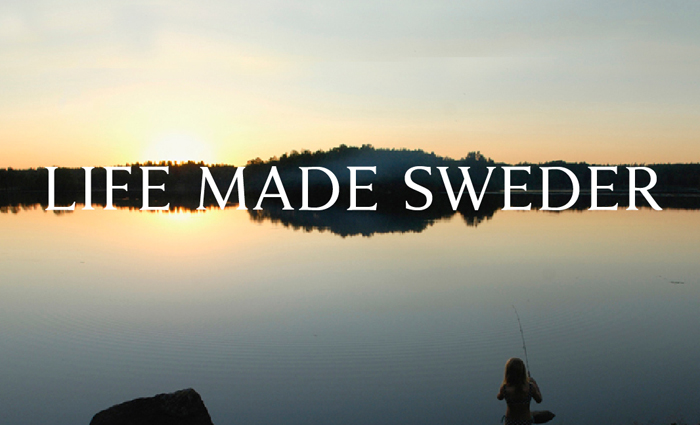Rediscovering Vasa
Nearly 400 years after it sunk, an American carves the most accurate replica of the Swedish Vasa warship.
-
 Clayton Johnson with the Vasa replica.
Clayton Johnson with the Vasa replica. -
-
While he was a young boy in Minnesota, a National Geographic article on the Swedish warship Vasa caught Clayton Johnson’s attention, and years later it would be the subject of an impressive project that he would take on: In 2012, after seven years of working nearly every day, Johnson finished building a 1:50 scale replica of the famous warship.
The Vasa Museum in Stockholm has called Clayton Johnson’s replica the most accurate in the world, and to a certain extent it helped solve some of the construction mysteries that exist with the actual ship; it has been on display in various exhibits in the U.S. and can be seen at www.sites.google.com/site/clayton707/home. In 2011 the Vasa Museum welcomed Johnson to install 1:10 scale Vasa artillery that he made for their large model. Johnson's work and the real Vasa can be seen at the Vasa Museum, which in 2016 was named one of the world’s most fascinating museums. www.vasamuseet.se Here's a brief on the ship's story: In Swedish History: On August 25, 1956 ...
We interviewed Johnson for our issue 12, vol. 145 in the fall of 2017: -
 Vasa Museum in Stockholm has called Clayton Johnson’s replica the most accurate in the world.
Vasa Museum in Stockholm has called Clayton Johnson’s replica the most accurate in the world. -
-
How did you get your start in carving?
CJ: I generally regard my Vasa project as jump-starting my carving. I did do a couple carved items before that, but they were amateur attempts. It seems I have always had an interest in it, but it took Vasa to kind of push me in that direction and give me the volume of carving needed to start getting good at it. Since then, I have completed many larger carving projects. Some of them include a couple half- to full-scale Vasa sculptures, a sculpture of the warhorse of Gustavus Adolphus, some necklace pendants, decorative spoons and others. -

-
Are you educated as a sculptor or ship historian?
CJ: No, I have a degree in Environmental Science. I am a Major Land Resource Area leader for the USDA-NRCS. I found wood for my Vasa project by looking online; there are a few websites out there that sell small dimension exotic wood. -
 Make Life Sweder. A subscription to Nordstjernan is the gift that keeps coming: <a href="http://www.nordstjernan.com/subscribe">SUBSCRIBE to Nordstjernan</a> Treat yourself or order it for someone you care about. (Stay on top of food - collect recipes - follow film, music and Swedish events or traditions that concern us in the United States)
Make Life Sweder. A subscription to Nordstjernan is the gift that keeps coming: <a href="http://www.nordstjernan.com/subscribe">SUBSCRIBE to Nordstjernan</a> Treat yourself or order it for someone you care about. (Stay on top of food - collect recipes - follow film, music and Swedish events or traditions that concern us in the United States) -
What kept you motivated to carve the Vasa ship?
CJ: The thing I liked most about building Vasa was the challenge. To do it in the way I did — like the original: with a keel, stem, sternpost, framed-up hull and decks, etc. — is incredibly challenging. There are essentially no right angles to work from! When you build a house you most always have walls and floors that are 90 degrees to each other. There is almost nothing that simple to Vasa.
I also enjoy building historic firearms. My first was a British Baker rifle, which was the first government issued military rifle in history, and I did a matchlock musket that I built after one from Vasa and carved my own stock for.
Usually when I start a project I like to take it to the end. I don't like giving up on things. When I started Vasa, I did a portion of the sculpture first, to be sure that I could carve. Then I did a bit of the hull, and back to some carving again. That way the carving task did not seem so daunting. -
What was it like to install your work at the historic Vasa Museum?
CJ: Installing the artillery was an incredible experience. I was humbled by it. And to know that around 1 million people see my work there every year is very nice. On top of everything else, the timing worked so the celebration of the 50th anniversary of the raising of Vasa was while I was there. -
How did the Vasa Museum find out about your amazing work?
CJ: In 2005 I contacted the director of research, Fred Hocker, about building a model of Vasa. Fred is always very willing to help model builders. Part of the reason is that model building can help solve some of the construction mysteries that exist with the actual Vasa — which my project did to a certain extent. And because of my help figuring out certain aspects of Vasa's construction and my contribution of 1:10 scale artillery to their model, I have been allowed onboard several times. -
Do you have Swedish heritage?
CJ: My heritage is mostly Scandinavian — Swedish, Norwegian and Danish. There is some Finnish and a small amount of Cherokee, too, as far as I know; there may be many more things in there. We named our son Magnus because it is very unique in the U.S., even if not in Scandinavia. We also know of a Magnus in Sweden who works at the Vasa museum, though we didn’t name our son after him. -
What do you look forward to the next time you go to Sweden?
CJ: I always look forward to the laid back atmosphere that Sweden has, and the food is very good, too. I really enjoy visiting their museums. A couple of my favorites are Stockholm’s Livrustkammaren (The Royal Armoury) and Historiska Museet (the History Museum), which has an incredible Viking treasure display. -
Amanda Robison
-
-
